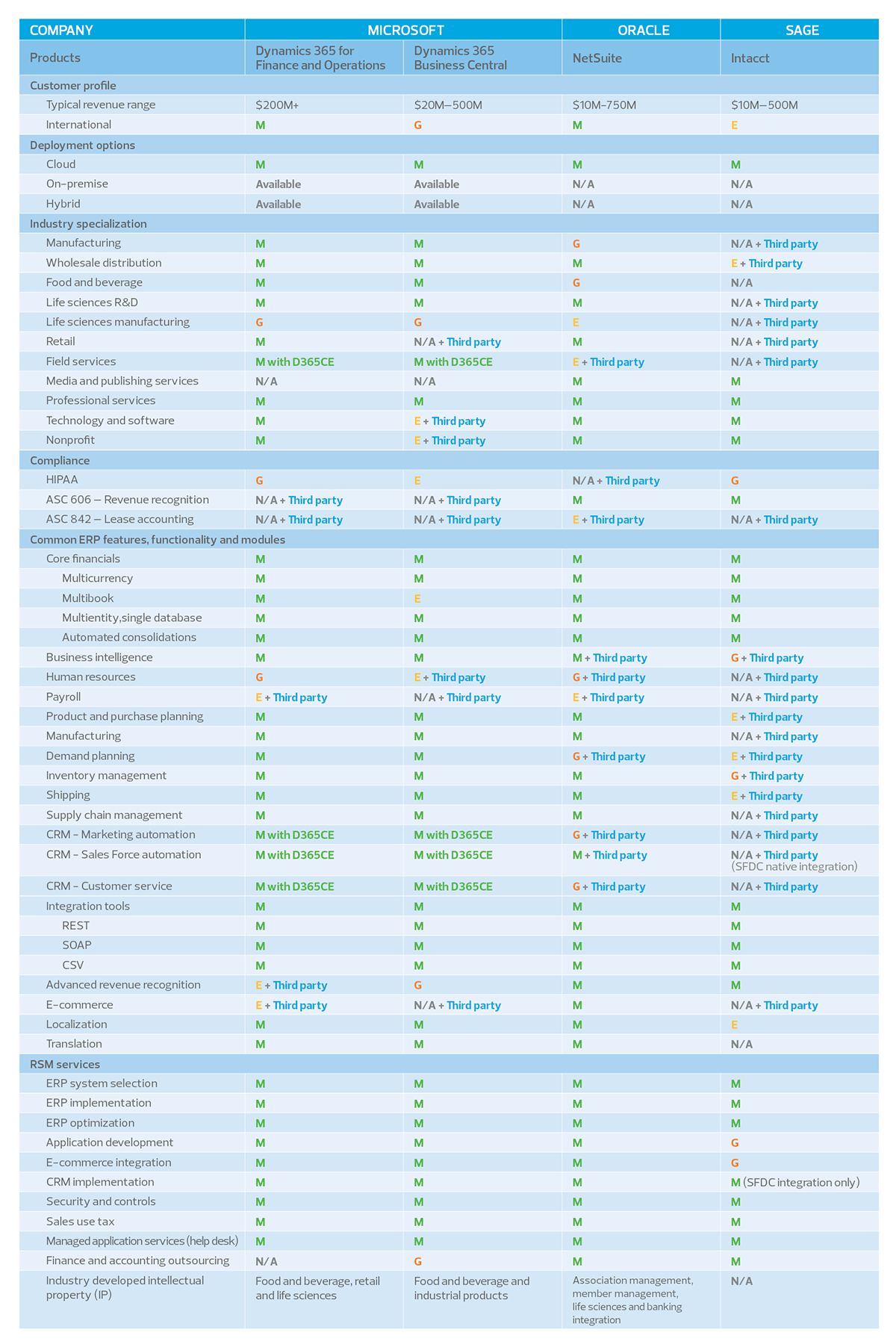The ERP software market encompasses many vendors, offering several diverse cloud ERP applications. Some of these ERP software companies have developed vertical solutions to meet specific industry requirements for retail, distribution, manufacturing and more. This matrix is designed to help your company facilitate the process of evaluating critical aspects of cloud-based ERP systems to choose the right solution that supports your unique requirements and business needs.
We have created five assessment categories on how we would classify certain functionality and industry alignment to support a given company profile. Please keep in mind that our assignment of a specific category is our opinion and not one validated by each of the software solutions represented in our document. Many software providers claim to address a wide variety of industry and functional needs. It is our goal to provide a nonbiased and objective viewpoint based on our years of experience working with a large variety of clients.


